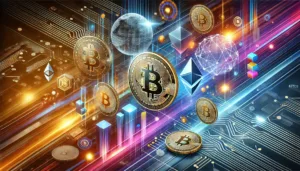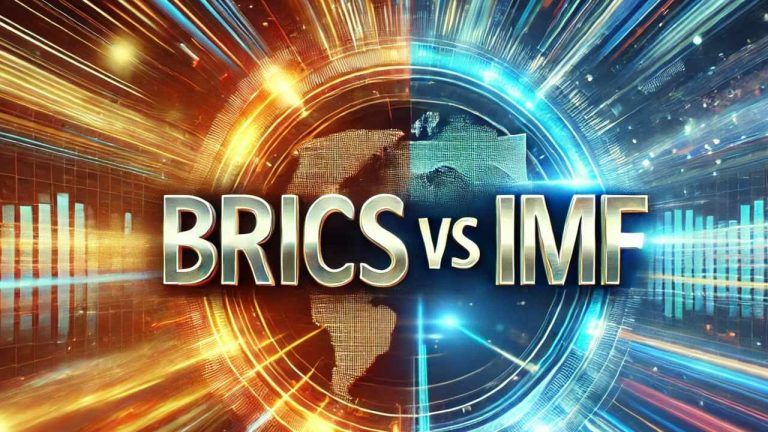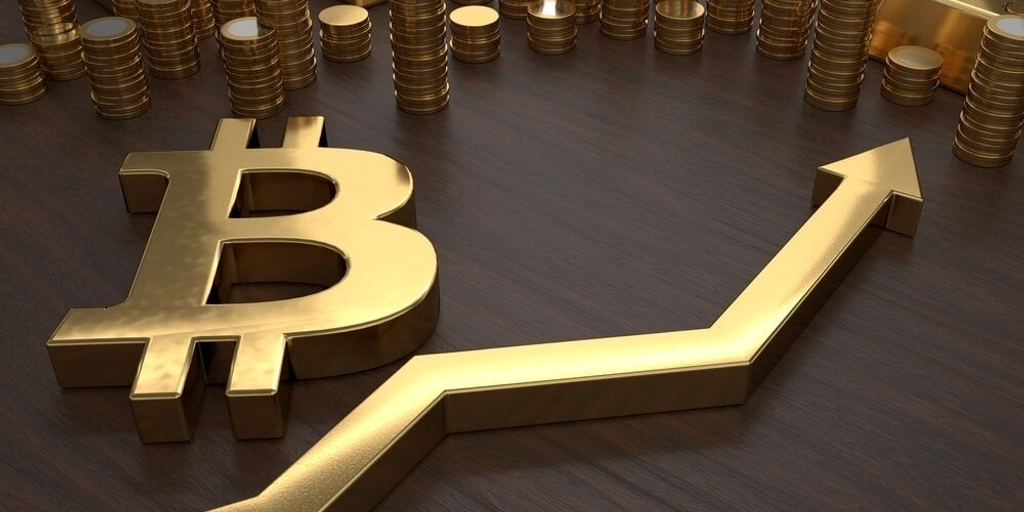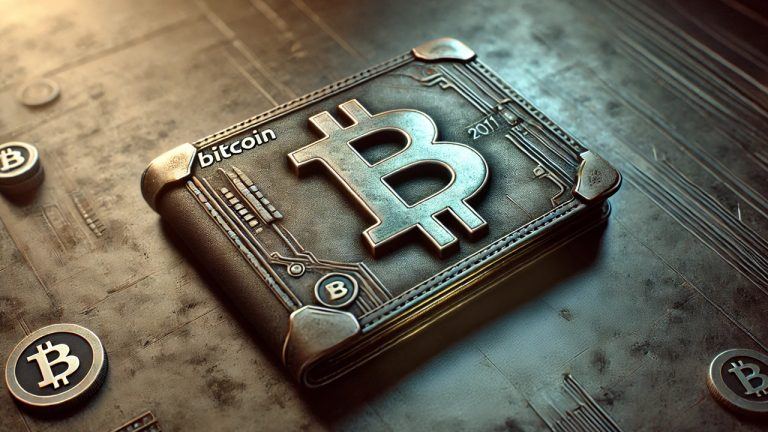This Q4 2024 market report is brought to you by the Research Team at Techemy Capital. Techemy Capital Limited is a boutique investment management company focused on digital asset management. We seek to provide fund managers and institutional investors with clear, well-researched, and cutting-edge investment opportunities. Techemy Capital Limited is an authorised Financial Services Provider to wholesale investors under New Zealand law.
Techemy.Capital
2024 Q4 crypto outlook Introduction:Deep into the final quarter of 2024, the global economy and cryptocurrency markets are navigating a complex landscape marked by anticipation with a touch of uncertainty. With the US Federal Reserve’s efforts to engineer a soft landing reminiscent of the 1990s and Bitcoin’s steady ascent as a digital hedge, market sentiment is cautiously optimistic. As has been the case for much of the year, Bitcoin has been steady, and threatening to break out, but as yet unable to push on to new all-time-highs.
In this piece, we explore the key macro trends shaping the digital asset markets in Q4 2024. We then focus specifically on Bitcoin and Ethereum’s respective positions as we approach the end of the year before reviewing the growing relevance of meme coins and the implications this may have for the broader digital asset space.
90s Nostalgia and the Soft LandingA theme running through Russell Investments’ Q4 economic outlook is 90’s nostalgia. Noel and Liam Gallagher have miraculously found a way to make up and go on tour again, while the US is seeking to deliver a soft landing, a Central Bank holy grail last pulled off in the 1990s. A soft landing is a Central Bank-driven cyclical slowdown in economic growth that ends without a period of recession.
Between 1994 and 1995, the US Federal Reserve raised rates 7 times, and then a few more times in 1995. The US, under Fed Chairman Alan Greenspan, was able to successfully cool off inflation without derailing the growth of the economy. Alan Blinder, former vice chairman of the Federal Reserve, noted that this was the “perfect soft landing that helped make Alan Greenspan a central banking legend.”
US GDP growth.
Source: U.S. Bureau of Economic Analysis
Several major American institutions have assured citizens that a soft landing is coming in 2024.
Source: Google
Central Banks are often pushed into raising interest rates to deal with quickly rising inflation and prevent the economy from overheating. Following the compensatory quantitative easing that the US Federal Reserve used to deal with an economy struggling during the pandemic of 2020-2023, the money supply rose, and so did inflation.
US inflation rate
Source: U.S. Bureau of Economic Analysis
In this economy, people needed more dollars to buy the same things, and wages could not keep up. To combat this, the Fed began a monetary tightening cycle, raising interest rates and making capital more expensive, signaling the beginning of a saver’s economy.
Interest Rate Movements and Market ReactionsThe US target rate began rising in March 2022. It continued ramping up before peaking in July 2023. The rate was then left flat for over a year before finally being cut in September 2024.
Source: The Federal Reserve
US Fed Funds Rate
This recent cut on the cusp of Q4 2024 has created hype, excitement, and bullish expectations. Russell Investments notes in its Q4 outlook: “The stakes are high. Markets are priced for a soft landing, so even a mild recession is likely to trigger a significant equity-market correction.”
Risks to the Soft Landing Narrative
S&P Global, in its Q4 outlook, predicts volatility and outlines risks that may disrupt the soft landing narrative. Labor demand has been resilient. “Despite fast policy and market interest rate increases, labor demand has remained reasonably strong.” If free-market-driven services spending and labor were to teeter and fall off, interest rates would likely have to drop more than planned to avoid a deeper recession, which could lead to overheating and a terminally dysfunctional economy.
This is the situation US Central Bankers have been trying to avoid, and they use it to justify their slow, steady approach to interest rate cuts. If interest rates were cut too sharply, that could trigger a hard landing. Another potential danger for a soft landing scenario is geopolitical tension.
The increasing likelihood of a land war in the Middle East combined with the ongoing conflict in Ukraine may mean the immediate and disruptive reconfiguration of supply chains and energy sourcing. These could create a risk-off environment, where market participants flee from riskier assets to safer ones.
Impact on Digital AssetsA risk-off environment would be detrimental to the crypto sector, even for assets such as Bitcoin (BTC) and Ethereum (ETH), which have safe-haven elements. While there is clearly optimism, there is also uncertainty about whether the US economy can pull off the soft landing that investment markets—particularly digital assets and equities—crave. Whether the Federal Reserve can sustain aggressive interest rate cuts will be crucial. Fed meetings and economic data in October, November, and December will significantly impact the markets as we approach the end of the year.
Bitcoin’s Place in the Macro PictureOne reason Bitcoin succeeds in low-interest-rate, easy-money environments is its hard-money characteristics. Bitcoin was built as a decentralized payment network that removes intermediaries and counterparties from transactions. Its hard-coded, predictable monetary supply makes it a deflationary asset. Investors find Bitcoin compelling because it operates outside the influence of chaotic central bankers and interest rate cycles.
When Satoshi Nakamoto uploaded the Bitcoin whitepaper in October 2008, financial markets were in turmoil, and US government agencies were bailing out banks. Central Banks were printing money and creating lines of liquidity to prop up the financial system. The genesis block for the Bitcoin network, mined in January 2009, included a message that referenced a headline from The Times: “The Times 03/Jan/2009 Chancellor on brink of second bailout for banks.”
Declining Dollar Purchasing Power and Bitcoin’s Deflationary NatureA presentation from the BlackRock ETF team at a recent digital asset conference in Brazil highlighted the declining purchasing power of the US dollar over the past 100 years. Bitcoin is built to be the opposite—deflationary, not inflationary. While we’re not in the same position as 2008, with inflation rising and interest rates still expected to drop, BTC is the kind of asset that could do well in these conditions.
Source: Blackrock presentation, digital asset conference Brazil 2024
Bitcoin’s (BTC) Response to the Soft LandingBitcoin (BTC) wasn’t around in the 1990s, but it is eagerly anticipating the soft landing. BTC began trading near the US$59,000 price level in September and ended above US$67,500 today—a 12.1% jump in value.
Source: BNC Bitcoin Liquid Index
Bitcoin ETF and Market SentimentZooming in on the current market, Bitcoin has performed well on expectations for an incoming low-interest-rate environment. There are signs that this belief has been around for some time. Bitcoin spot ETF inflows have been steady and consistent through 2024, with only a few red weeks in an otherwise inflow-heavy year.
Source: Bitcoin ETF Dashboard: Latest BTC Spot ETF Daily Data and Charts of Inflow and Outflow (sosovalue.xyz)
Glassnode recently noted that the number of long-term holders in loss has increased as large volumes of BTC acquired near US$73,000 have crossed the 155-day long-term threshold. However, Glassnode reassures that the magnitude of unrealized loss remains small, suggesting minimal financial pressure on holders.
Similarly, Bitfinex noted in a June blog that “implied volatility has increased only slightly in anticipation of the Bitcoin halving and potential ETF approval,” with overall investor sentiment leaning towards indifference and low market activity.
Ethereum’s (ETH) 2024 PerformanceEthereum (ETH) is the largest smart contract platform in the world and a leader in the Web3 movement. While Ethereum is up about 5% year-to-date, Bitcoin is up 44%, and competitors like Solana (SOL), Sui (SUI), and Toncoin (TON) have surged far higher—up ~53%, ~173%, and ~131%, respectively. Despite its strong foundation and well-established ecosystem, Ethereum has been overshadowed by faster, cheaper blockchains performing Web3 operations more efficiently.
Challenges Facing Ethereum ETFsSpot Ethereum ETFs were approved for trading in late July 2024, but unlike Bitcoin ETFs, Ethereum ETFs have struggled to gain traction. One key issue is that Ethereum ETFs do not offer staking rewards, a core incentive for many ETH holders. Unlike Bitcoin, which uses proof-of-work (PoW), Ethereum operates on a proof-of-stake (PoS) system. Staking is an essential part of Ethereum’s ecosystem, and products like Lido Finance make staking easy and accessible for users.
Several ETF issuers, such as Fidelity and Ark Investments, initially considered offering staking within their ETFs. However, pressure from the SEC led to the removal of this feature. The SEC cited concerns over risks like slashing penalties (where staked funds can be forfeited due to network misbehavior) and illiquidity of locked-up ETH. This lack of staking rewards has made Ethereum ETFs less attractive compared to holding the asset directly.
Market Response to Ethereum ETFsThe Grayscale Ethereum Trust has seen significant outflows, which have weighed down Ethereum spot ETFs. Money has flowed out of Ethereum ETFs, driven primarily by these outflows from Grayscale. However, most other Ethereum spot ETFs have had positive cumulative net inflows, suggesting that once the Grayscale outflows stop, Ethereum spot ETF flows could turn positive.
A Major Market Narrative of 2024: MemecoinsMemecoins are cryptocurrencies that often originate from internet memes or have some humorous element associated with them. These coins typically do not have intrinsic value or a solid project backing them but gain popularity and value through community involvement, social media hype, and speculative trading. They operate on blockchain networks like Ethereum, Solana or Binance Smart Chain, and transactions and ownership are recorded on these decentralized ledgers.
Memecoins represent a unique and often risky segment of the cryptocurrency market. Their value is primarily driven by social factors rather than technical or fundamental developments. While they can offer substantial returns during hype cycles, they are also prone to significant volatility and risk. As always, potential investors should approach memecoins with caution and conduct thorough research before investing.
They have exploded in popularity in 2024 and memecoins, as a token sector, is now larger than infrastructure tokens, gaming tokens, and Decentralized exchange (DEX) tokens. Crypto market data source Coingecko estimates that the memecoin sector is worth ~US$59 billion.
For many 2024 will likely be remembered as the period memecoins overshadowed and outperformed technologically advanced, infrastructure-building behemoths like Ethereum, and XRP.
Just like DeFi in 2019 and NFTs in 2021, The memecoin sector has almost single-handedly driven new mainstream interest into crypto this year. From coins that satirize politicians to ones that celebrate cute animals, internet comedy, and internet celebrities. These tokens which often deliberately and transparently favor early investors have had a surreal rise with many embracing the financial nihilism ethos they represent.
Top crypto narratives in Q1 2024. Source: CoinGecko
A report by CoinGecko covering Q1 of this year, showed how the memecoin sector has emerged as the strongest narrative. The report reveals staggering average returns of 1,300% across the top memecoins by market capitalization, easily outperforming narratives such as DeFi, RWA or DePIN.
Financial nihilism represents a jaded attitude particularly notable amongst millennials — Get rich by any means possible even if it means gambling on tokens with no fundamental value or in our opinion getting in early on the pump and dumps and Ponzi schemes. Memecoins like BONK and PEPE which had very strong finishes to 2023, have paved the way for a wave of crazier and more extreme memecoin projects.
Young investors, and some older more traditional ones, are increasingly pessimistic about their futures because of inflation, high property prices, chaotic politics, and divisive cultural trends, and they’re turning into anarchists who increasingly want to throw the traditional investing playbook out of the window.
Source: X
This trend is likely to continue into Q4 2024. New meme coins like S&P6900, Cheeseball the wizard, Klaus (all real memecoins) continue to be released every day. As memecoin analyst and financial professional Murad Mahmudov explains on X “The Memecoin Supercycle is happening. Don’t fight this Tsunami. Find an Entry and jump on board.”
The more pragmatic amongst us, however, can see that meme coins are a house of cards that chaos, greed, and nihilism built. While there is money to be made in the meme coin sector and it is likely to grow in the near term, it is important to understand that no strong fundamentals are underpinning it, so when the sectoral slide does kick in, it is likely to be severe and violent.















